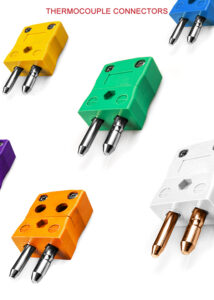What is the Function of Sensor Cable Connectors?
Sensor connectors are used to connect a sensor to a power source. They’re a convenient and faster alternative to hardwiring. They are useful for sensors that detect distance, presence or absence of objects. These cables usually have two connectors – M12 and M8.
Line Post Sensor cables
Lindsey’s new GEN2 Line Post Sensors incorporate the same high accuracy as their predecessors while offering a 50% weight reduction. They feature click-to-close water-tight cable connectors and feature a hook stick conductor keeper. Both high-accuracy and standard line post sensors are available in a range of conductor diameters.
The Line Post sensor cable connector are insulated, dual-shielded wires with two or four-PIN connectors that are MIL-DTL-5015-compliant. They are available in lengths ranging from 0 to 50 feet. The PSC8202XX0 model is a five-foot cable while PSC8202XX50 is a 50-foot cable.
MQDC1-506 sensor cable connector is a 2m, 22AWG female straight Euro-style Quick Disconnect Cable with a chrome-plated brass coupling nut. The cable allows for quick sensor replacement, as well as the easy movement and relocation of safety devices. This cable can be used with both AC and DC-powered devices. It features a black PUR body, and is a flying-lead secondary connector type.
M12 connectors
M12 connectors are circular connectors with a 12-mm locking thread and are used in sensor and actuator cable applications for industrial Ethernet, fieldbus, and factory automation systems. They are highly versatile and can be used for sensors, actuators, and a wide range of other devices. These connectors are available in three, four, five, or eight pin configurations and are designed to be durable and secure. M12 connectors are also compatible with a wide range of cable types and are available in different styles for various applications.

M12 connectors are used in a wide range of applications, including communications, alternative energy, factory automation, measurement and control, robotics, and transportation. They provide reliable, secure connections that reduce downtime. You can find many different types of M12 connectors, including those geared specifically for sensor cables.
M12 connectors can be coded with various codes for security. A-coded connectors are the most common, with two to twelve pins. B-coded connectors, on the other hand, are used for network cables and Profibus systems. C-coded connectors are less common and feature a dual keyway for extra security. They are also available in three to six pins.
M8 connectors
M8 connectors are a popular choice in a variety of industries. They are waterproof, oil-resistant and cold-resistant. They provide efficient, reliable connections and are ideal for sensor cable applications. They are also widely used in proximity and photoelectric switches, and are available in a variety of lengths and outlets.
M8 connectors are a popular choice for small sensors because they are proportional to the size of the sensor, enabling the sensor to be installed in tighter spaces. Another benefit of using M8 connectors is that they can be easily connected and disconnected with a simple turn of a rotatable lock nut.
These connectors have two thread types: M12 and M8. M12 connectors have a 12-mm circular threaded head, while M8 has an 8-mm circular coupler. Both types of connectors have IP67 protection and are often used in industrial automation. M8 connectors are available in various materials, such as PVC and PUR. They can also be customized to meet individual user requirements.
MQDC1-506 sensor cables
M8 connectors are available with 4, 5, or 12 pins. Both M8 and M12 connectors feature a threaded design and a protection rating of IP67. There are also different options for shielding, such as the flying lead and the blunt end. You can also get custom cable lengths if needed.
M12 connectors have a 12-mm locking thread and are typically used for actuators, sensors, industrial ethernet, and Fieldbus. They come with 3, 4, and 5 pin counts, depending on the application. Four pins are common for sensors, while five and eight pins are common for power applications. The M12 connector supports many different industry standards, including PROFINET.
The E2000 sensor cable connector is a standard, high-performance connector for sensor cable applications. Its design and manufacturing process comply with the highest standards, ensuring optimal performance and reliability. The connector uses a patented Active Core Alignment process, a process that centers the fiber core on the ferrule’s axis, reducing insertion loss and controlling eccentricity. In addition, this connector features tight tolerances, allowing it to achieve 0.1 dB class insertion loss.
The E2000 sensor cable connector is designed for easy installation and termination. It features a two-hole flange and full-ceramic ferrule. The connector also features a 900-um cable and integrated protective cap. These features allow the E2000 sensor cable connector to meet the demands of industrial, commercial, and government sectors.
PVC
Autosen AA025 sensor cable is a tested quality product with UL certification for use in food industry and other hygienic environments. It features a vibration resistant locking principle, IP65 protection, and gold-plated contacts. The 25-m cable is made of PVC and has a straight M12 socket. The cable is also halogen and silicon-free.
TPE
When choosing the right sensor cable connector for your application, you need to ensure that the connector you choose is able to handle the specific needs of your application. The cable connectors that you choose should be able to handle the amount of stress placed on them, as well as the voltages they are expected to withstand. In addition, you should also look for a connector that offers high-performance and resilience. The TPE sensor cable connector can help you achieve this goal.
Sensor cable connectors can be made of several different materials. These materials determine how useful they will be in a given application and what features they will provide. The most common materials used for industrial cable connectors are PVC, PUR, and TPE. Each material offers its own benefits. PVC, or polyvinyl chloride, is widely used and has good moisture and temperature resistance. This type of cable is also a great choice for wash-down applications.
A PUR sensor cable connector is a versatile part that can be used with various types of sensors. These cables are made from silicone and halogen-free materials. They are also noise and oil-resistant and have gold-plated contacts. They also provide cross-manufacturer compatibility, ensuring superior availability worldwide.



Recent Comments